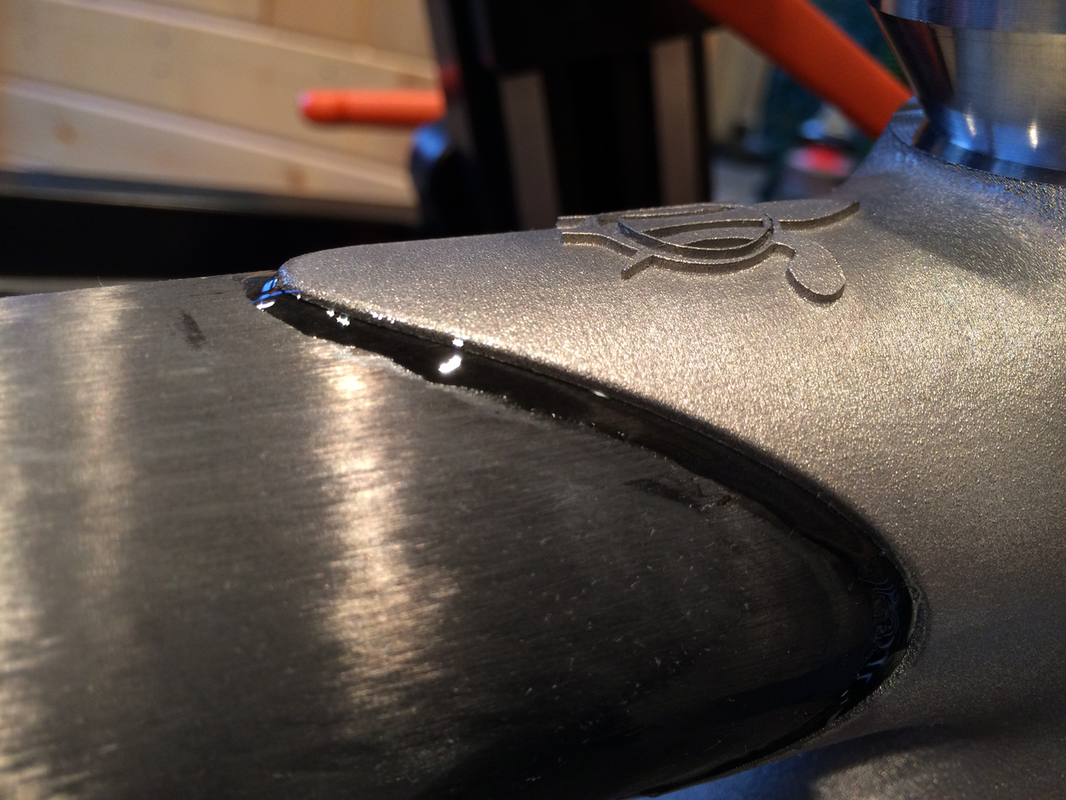|
For every new frame model, big name bicycle manufactures build a number of prototypes and test them to destruction to see where they fail. But for a small builder doing full custom, every frame is a prototype. Without extensive prototyping and destructive testing, how do you know a frame from a custom builder is safe? I address safety in five ways:
Having made these points, fellow builders at NAHBS 2016 offered to test a frame to failure for me at minimal cost. It is very generous of them. Most likely, the NAHBS Winter Training Bike will be sacrificed sometime this summer. After I do a post-mortem, I'll send the lugs back to GPI for evaluation. I’ll post the results here. In the meantime, read on for more detail. 1. Use established materials and methods. Métier Vélo frames are made with stock carbon tubes from Rockwest bonded into 3D-printed 6/4 titanium lugs from GPI Prototypes using West System toughened epoxies. Métier Vélo frames have a traditional layout and appearance reminiscent of lugged steel frames.
2. Build conservatively. I stay well within the limits of my materials and methods, and leave a margin for error.
3. Select clients carefully. I accept orders from the general public, but I will only select clients who know their way around a bicycle and will spot problems. There has been a lot of interest in Métier Vélo frames from people with engineering and composites backgrounds. Clients attracted to Métier Vélo tend to possess the requisite knowledge. 4. No questions repair and replacement. If there is any question about a Métier Vélo frame, I want it back. Race crash, car crash, garage with the roof rack. Doesn't matter. A day of my time and a few hundred dollars worth of carbon will fix the problem and eliminate the risk of anyone riding a damaged frame. Even if I have to replace an entire bicycle and eat the cost, the business can withstand that and I will sleep well at night. When I consider the alternative, if I thought one of my frames injured or killed someone I could not live with myself, and the business would not (and should not) survive. 5. Current liability insurance. If the unthinkable were to happen, and you were injured on a Métier Vélo frame, my liability insurance will cover your expenses. Insurance is just the responsible thing to do.
0 Comments
Leave a Reply. |
AuthorJamie White Categories
All
Archives
November 2017
UpdatesSubscribeReceive update notices.
|



 RSS Feed
RSS Feed